Web Design 2025: Sustainability, Personalization & AI Shaping the Future

Explore the leading web design trends for 2025: sustainable design, personalized user experiences, and the application of AI to create effective and impressive websites.
Web Design Trends 2025: Sustainable, Personalized, and AI-Powered

2025 promises to be a breakthrough year for web design, with new trends that not only improve the user experience but also focus on sustainability and efficiency. The three main areas shaping the future of the web are sustainable web design, personalized user experiences, and the integration of artificial intelligence (AI). Let's explore them in detail!
1. Sustainable Web Design (Green Web Design)
Sustainable web design is not just a trend but also a responsibility. In the context of climate change, reducing the environmental impact of websites is becoming more important than ever. Sustainable web design focuses on reducing carbon emissions by optimizing every aspect of the website, from hosting to content.
Key Elements of Sustainable Web Design:
- Green Hosting: Choose hosting providers that use renewable energy.
- Image Optimization: Use efficient image formats like WebP, compress images to reduce file size, and use lazy loading to only load images when they appear on the screen.
- Resource Minimization: Minimize the number of HTTP requests, use CSS and JavaScript efficiently, and remove unnecessary resources.
- Energy-Efficient User Experience: Design a simple, intuitive, and easy-to-use user interface so that users can quickly find the information they need, reducing the time they spend on the website and the amount of energy consumed.
For example, an e-commerce website can significantly reduce its carbon footprint by optimizing product images and using a CDN (Content Delivery Network) to distribute content from servers closer to users. Businesses can consult Vinawebapp.com, a professional web design company in Da Nang, Vietnam, for advice on sustainable web design solutions.
2. Personalized User Experience (Website Personalization)
Personalizing the user experience is key to attracting and retaining customers. By using data and AI, businesses can provide relevant content and unique experiences for each visitor. This not only improves customer satisfaction but also increases conversion rates and revenue.
Methods of Personalizing the User Experience:
- Use User Data: Collect and analyze data about user behavior, preferences, and demographics to better understand their needs.
- User Segmentation: Divide users into groups based on common characteristics and provide relevant content for each group.
- Product and Content Recommendations: Use AI to recommend products and content that match each user's interests.
- Customize the User Interface: Allow users to customize the website interface according to their preferences.
For example, Amazon uses personalization to recommend products that users may be interested in based on their purchase history and browsing behavior. Netflix uses personalization to recommend movies and TV shows that match each user's preferences. Personalization is not limited to displaying products but can also be used to customize homepage content, email marketing, and advertising.
Companies like Vinawebapp.com can help you implement effective personalization solutions, from collecting and analyzing user data to building appropriate recommendation algorithms.
3. Artificial Intelligence Integration (AI in Website Design)
Artificial intelligence is revolutionizing web design by automating tasks, improving UX/UI, and creating new interactive features. AI not only helps designers save time and effort but also allows them to create unique and engaging user experiences.
Applications of AI in Web Design:
- Design Automation: Use AI to create website layouts, select appropriate colors and fonts, and create graphic elements.
- Improve UX/UI: Use AI to analyze user behavior and optimize the user interface to improve the user experience.
- Chatbots: Use AI to create chatbots that can answer customer questions, provide technical support, and guide users.
- Automated Content Creation: Use AI to create website content, such as product descriptions, blog posts, and titles.
- Predictive Analysis: Use AI to predict user behavior and provide relevant content before the user requests it.
For example, tools like Adobe Sensei use AI to automate design tasks, such as selecting appropriate colors and fonts. Chatbots use AI to answer customer questions and provide technical support. AI can also be used to create automated A/B tests to optimize the user interface.
Many businesses have seen the benefits of using AI in website design. Vinawebapp.com is researching and applying the latest AI technologies to bring smart and effective web design solutions to customers.
Impact on SEO and Website Performance
All three of these trends have a significant impact on SEO and website performance. Sustainable web design helps improve page load speed and reduce bounce rate, which is beneficial for SEO. Personalizing the user experience helps increase conversion rates and time spent on the website, which is also beneficial for SEO. Integrating AI helps improve UX/UI and create high-quality content, which is beneficial for both SEO and website performance.
Action Steps for Businesses
- Learn About the Trends: Research and learn about sustainable web design, personalized user experience, and AI integration.
- Evaluate Current Website: Evaluate your current website to identify areas for improvement.
- Build a Plan: Build a plan to implement new trends into your website.
- Find Partners: Seek out partners with experience in sustainable web design, personalized user experience, and AI integration.
- Monitor and Measure: Monitor and measure the effectiveness of the changes you make to ensure they are delivering the desired results.
Conclusion
Sustainable web design, personalized user experience, and AI integration are important trends that will shape 2025. By adopting these trends, businesses can create effective, engaging, and environmentally friendly websites. Don't hesitate to explore and apply these trends today to prepare for the future of web design. Remember, AI doesn't replace humans; it's a tool to help us work more efficiently.
Contact Vinawebapp.com for advice and support in implementing the most advanced web design solutions!

